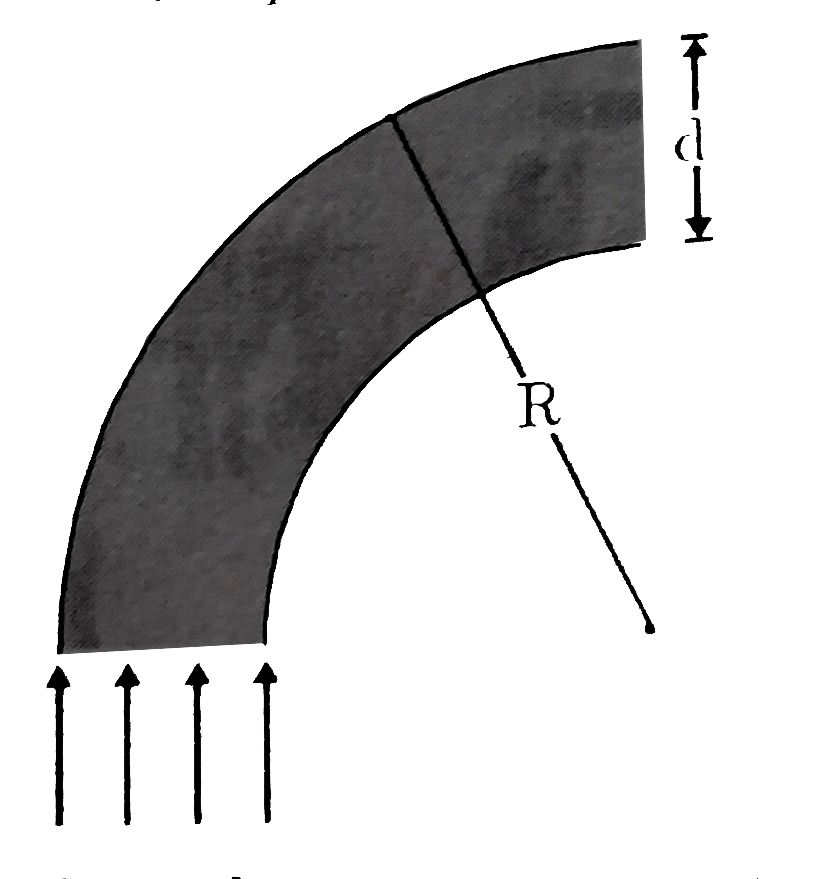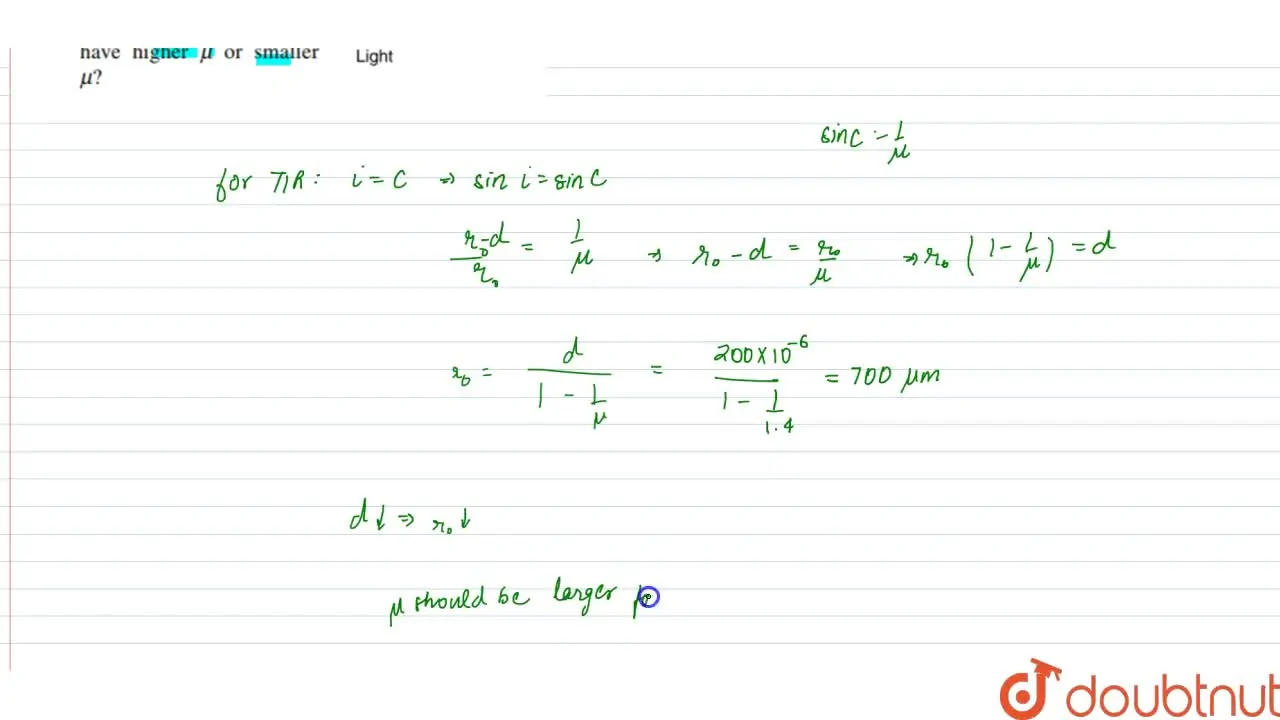An optical fibre has diameter d and is made of material of refractive indeed μ. It is surrounded by air. Light is made to enter through one end of the fibre as shown. The fiber is in the shape of a circular bend of outer radius r.
(a) Find least value of r(=ro) for which no light can escape out of the fibre. Calculate ro for d=200μm and μ=1.4.
(b) How is value of ro affected as d is made smaller?
(c) For sharper bends, shall we have higher μ or smaller μ ?

The correct Answer is:(a) r0=μdμ−10.7mm (b) r0 gets smaller (c) higher μ.
Step by step video, text & image solution for An optical fibre has diameter d and is made of material of refractive indeed mu. It is surrounded by air. Light is made to enter through one end of the fibre as shown. The fiber is in the shape of a circular bend of outer radius r. (a) Find least value of r (= r_(o)) for which no light can escape out of the fibre. Calculate r_(o) for d = 200 mum and mu = 1.4. (b) How is value of r_(o) affected as d is made smaller? (c) For sharper bends, shall we have higher mu or smaller mu ? by Physics experts to help you in doubts & scoring excellent marks in Class 12 exams.
Related Playlists
- BOOK - ARIHANTCHAPTER - GEOMETRICAL OPTICSEXERCISE - Level 39videos
GEOMETRICAL OPTICS
- BOOK - ARIHANTCHAPTER - GEOMETRICAL OPTICSEXERCISE - Level 39videos
GEOMETRICAL OPTICS
- BOOK - ARIHANTCHAPTER - ELECTROSTATICSEXERCISE - Level 359videos
ELECTROSTATICS
- BOOK - ARIHANTCHAPTER - MAGNETIC EFFECT OF CURRENTEXERCISE - Magnetic effect of Current45videos
MAGNETIC EFFECT OF CURRENT
Similar Questions
In optical fibre refractive index of core is
View SolutionIn an optical fibre ,the refractive index of the core material is
View SolutionA cylinderical optical fibre (quarter circular shape) of refractive index n=2 and diameter d=4mm is surrounded by air. A light beam is sent into the fibre along its axis as shown in figure. Then the smallest outer radius R (as shown in figure) for which no light escapes after incident on curved surface of fibre is:
 .View Solution
.View SolutionThe diameter of an optical fibre is :
View SolutionSpindle fibre is made up of
View SolutionYarn is made from fibres.
View SolutionAn optical fiber has index of refraction n=1.40 and diameter d=100μm. It is surrounded by air. Light is sent into the fiber along the axis as shown in figure. If smallest outside radius R permitted for a bend in the fiber for no light to escape is given by 50x(inμm) fill value of x.
 View Solution
View SolutionAn optical fiber has index of refraction n=1.40 and diameter d=100μm. It is surrounded by air. Light is sent into the fiber along the axis as shown in figure. If smallest outside raidus R permitted for a bend in the fiber for no light to escape is given by 50 x (in μ m) fill value of x.
 View Solution
View SolutionIn an optical fibre, the light signal is transmitted by
View SolutionThe diamete of optical fibre is :
View Solution


